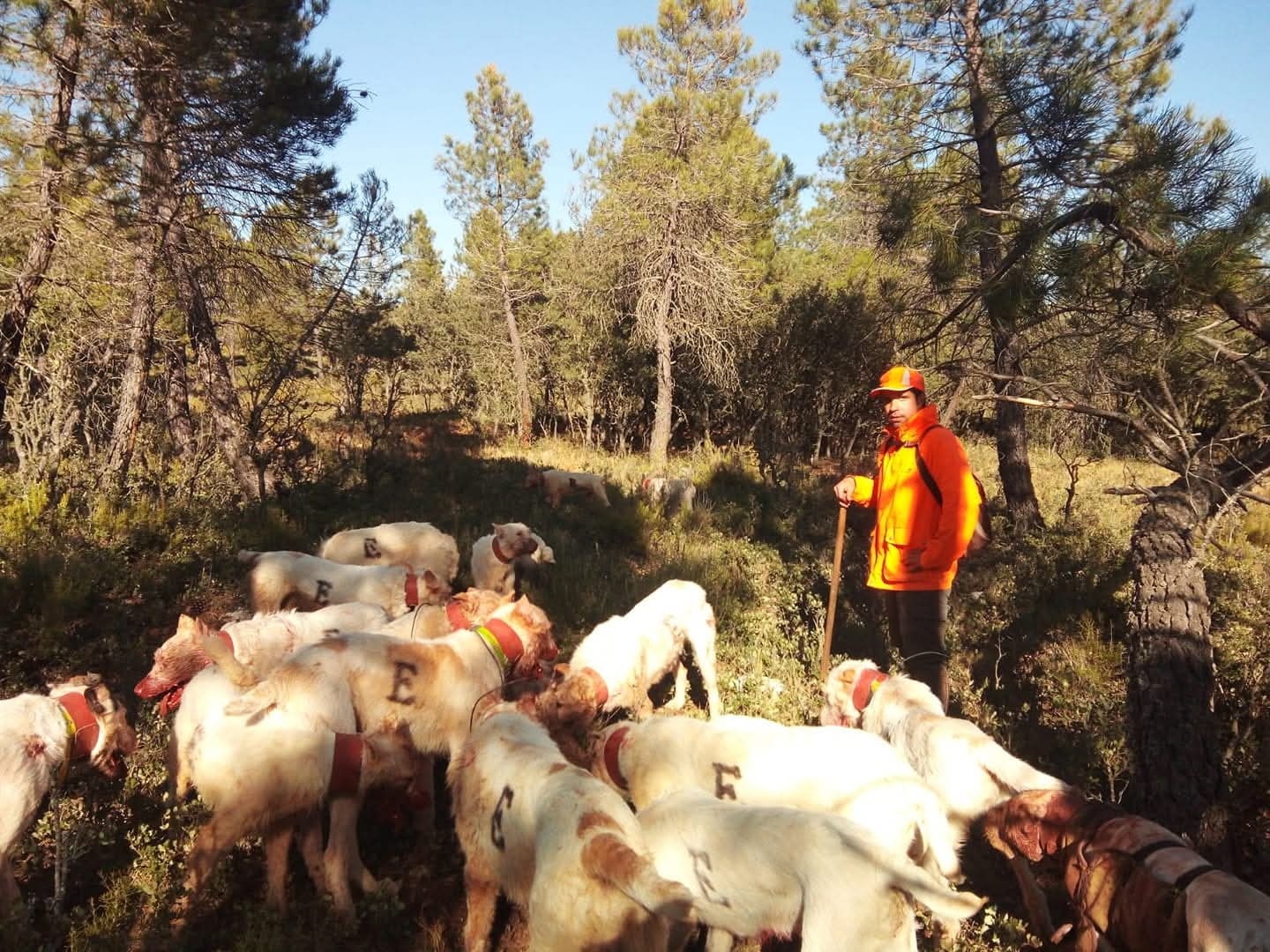
Rehalas: Where the Passion of the Mountain Becomes a Heartbeat
negética:
Our Fields Tremble to the Call of the Horn and Beat with the Barking of the Brave — the Warriors, the Pack. Because the Soul of Every Montería Lies, Without a Doubt, in the Rehala.
A fundamental and leading role in this hunting tradition belongs to the dogs — animals that pour out instinct and passion, gifting us with moments, grips, and images that no hunter would ever trade for anything.
Within every true rehala — a proper hunting pack — we can always distinguish three essential groups of dogs: the punteros (scouts), the middle dogs or “midfielders,” and the catch dogs.
The punteros are the first to locate the game, searching tirelessly through the thickest brush. They cover the terrain thoroughly, moving fast and with immense drive, often far ahead of their handler, and are usually the first to detect game within the thicket.
The middle dogs assist the others in driving the game toward the hunters’ posts. Along the way, they must bark continuously, signaling to other packs to join in the chase and help push the game toward the line of hunters, where the final moments of the hunt take place.
Finally, the catch dogs come into play when the game refuses to leave its bedding or, when wounded, decides to stand and fight. At this point, only the catch dogs should intervene, helping their companions subdue the animal — preventing more serious consequences, especially when a strong wild boar decides to turn and face the pack.
Many rehalas tend to include too many catch dogs, leading to excessive grips. Some handlers believe that having around ten percent of these dogs in the pack is more than enough to deal with such situations. A higher number would reduce efficiency during the chase and gradually diminish the characteristic latido — the distinctive barking that follows the game — since catch dogs rarely, if ever, bark while pursuing.
Among the tracking dogs, podencos stand out — true masters at flushing game from its hiding places, giving strength, drive, and vibrancy to the pack.
Count Yebes, in his book Twenty Years of Big Game Hunting, praised the podenco, calling it the perfect dog for the montería because it possesses “nose, feet, luck, and voice.”
As for the catch dogs, the Alano deserves special mention. It was admired by Antonio Covarsí, who said that Alanos were the ones who guaranteed success in his hunts. Today, however, this breed has lost much of its original presence and has been largely replaced by the mastiff in most Spanish packs.
Hunting with dogs is to live the montería from within — to feel the barking, the grips, the races, the brush and bramble (jara). It’s an experience only the rehalero truly knows — a passion lived 365 days a year, because his work doesn’t end with the hunting season. It continues all year long, caring for and preparing the dogs.
It is a demanding, costly job — poorly paid, yet richly rewarding. The true reward lies in living the countryside, in the triumph of overcoming the mountain and the wild conditions it presents.